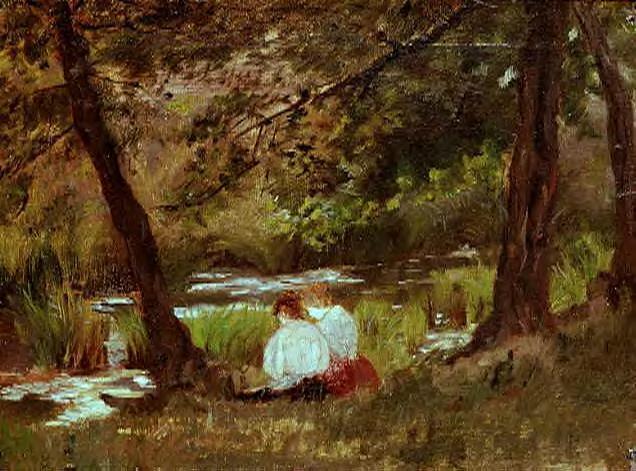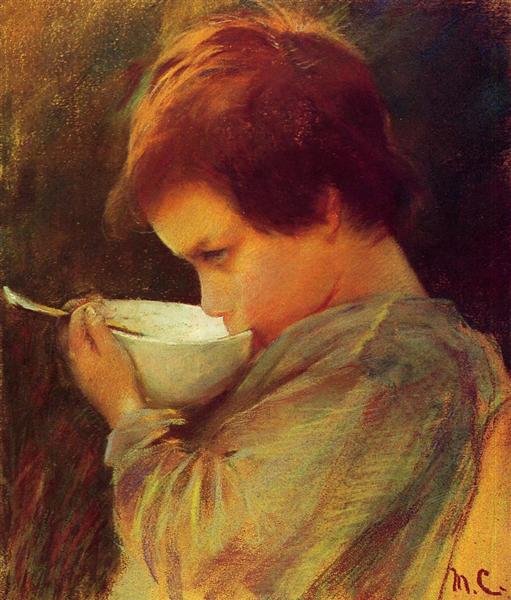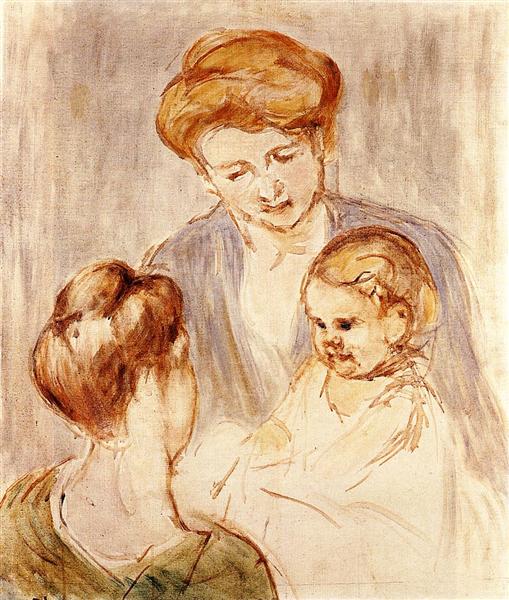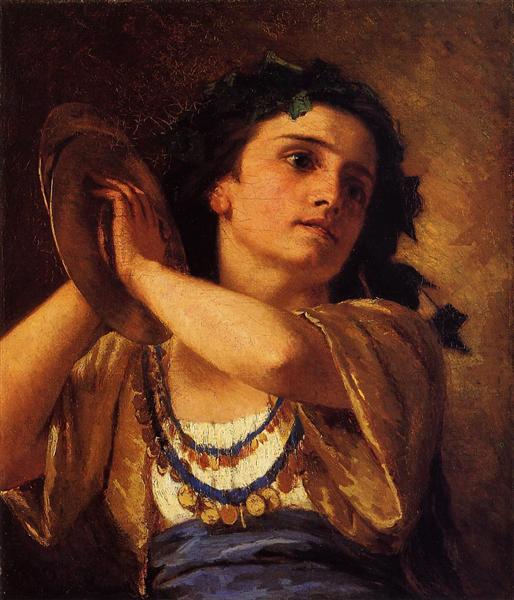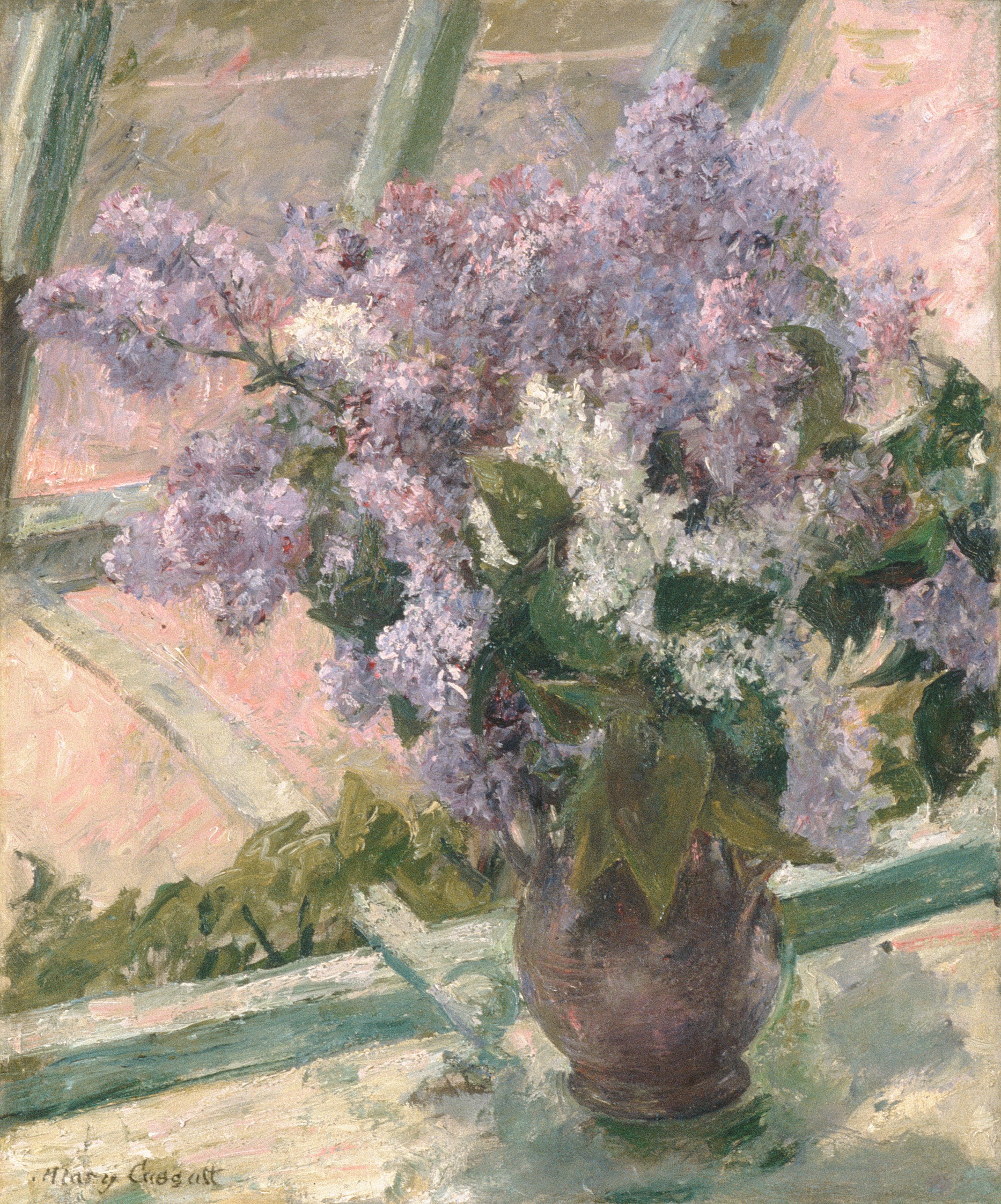
Cassatt was born in Allegheny City, Pennsylvania, which is now part of Pittsburgh. She was born into an upper-middle-class family: Her father, Robert Simpson Cassat (later Cassatt), was a successful stockbroker and land speculator. The ancestral name had been Cossart, with the family descended from French Huguenot Jacques Cossart, who came to New Amsterdam in 1662. Her mother, Katherine Kelso Johnston, came from a banking family. Katherine Cassatt, educated and well-read, had a profound influence on her daughter. To that effect, Cassatt's lifelong friend Louisine Havemeyer wrote in her memoirs: "Anyone who had the privilege of knowing Mary Cassatt's mother would know at once that it was from her and her alone that [Mary] inherited her ability." A distant cousin of artist Robert Henri, Cassatt was one of seven children, of whom two died in infancy. One brother, Alexander Johnston Cassatt, later became president of the Pennsylvania Railroad. The family moved eastward, first to Lancaster, Pennsylvania, then to the Philadelphia area, where she started her schooling at the age of six.
Cassatt grew up in an environment that viewed travel as integral to education; she spent five years in Europe and visited many of the capitals, including London, Paris, and Berlin. While abroad she learned German and French and had her first lessons in drawing and music. It is likely that her first exposure to French artists Jean Auguste Dominique Ingres, Eugène Delacroix, Camille Corot, and Gustave Courbet was at the Paris World's Fair of 1855. Also in the exhibition were Edgar Degas and Camille Pissarro, both of whom were later her colleagues and mentors.
Though her family objected to her becoming a professional artist, Cassatt began studying painting at the Pennsylvania Academy of the Fine Arts in Philadelphia at the early age of 15. Part of her parents' concern may have been Cassatt's exposure to feminist ideas and the bohemian behavior of some of the male students. As such, Cassatt and her network of friends were lifelong advocates of equal rights for the sexes. Although about 20% of the students were female, most viewed art as a socially valuable skill; few of them were determined, as Cassatt was, to make art their career. She continued her studies from 1861 through 1865, the duration of the American Civil War. Thomas Eakins was among her fellow students; later Eakins was forced to resign as director of the Academy.
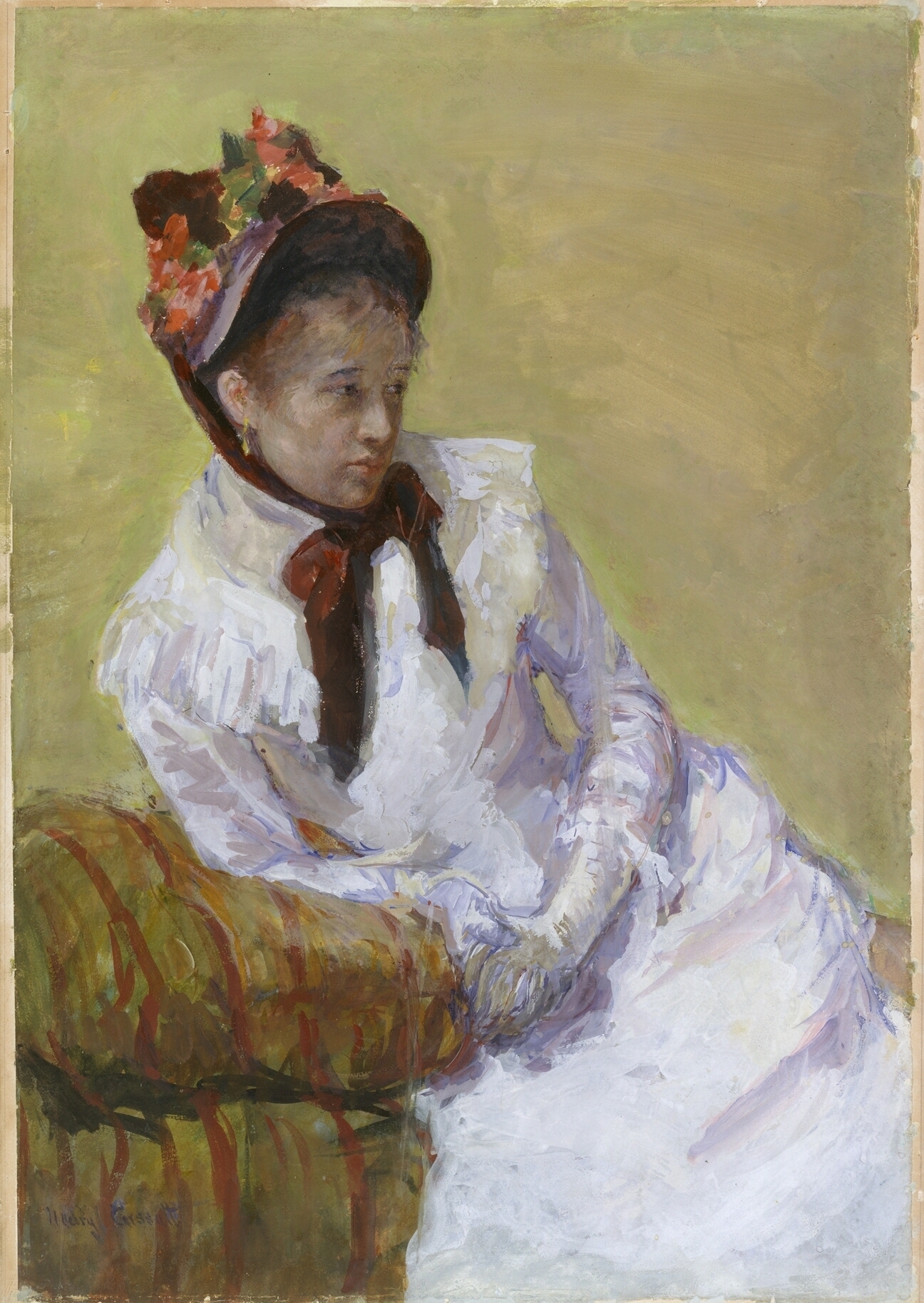
Impatient with the slow pace of instruction and the patronizing attitude of the male students and teachers, she decided to study the old masters on her own. She later said: "There was no teaching" at the Academy. Female students could not use live models, until somewhat later, and the principal training was primarily drawing from casts.
Cassatt decided to end her studies: At that time, no degree was granted. After overcoming her father's objections, she moved to Paris in 1866, with her mother and family friends acting as chaperones. Since women could not yet attend the École des Beaux-Arts, Cassatt applied to study privately with masters from the school and was accepted to study with Jean-Léon Gérôme, a highly regarded teacher known for his hyper-realistic technique and his depiction of exotic subjects. (A few months later Gérôme also accepted Eakins as a student.) Cassatt augmented her artistic training with daily copying in the Louvre, obtaining the required permit, which was necessary to control the "copyists", usually low-paid women, who daily filled the museum to paint copies for sale. The museum also served as a social place for Frenchmen and American female students, who, like Cassatt, were not allowed to attend cafes where the avant-garde socialized. In this manner, fellow artist and friend Elizabeth Jane Gardner met and married famed academic painter William-Adolphe Bouguereau.
Toward the end of 1866, she joined a painting class taught by Charles Joshua Chaplin, a genre artist. In 1868, Cassatt also studied with artist Thomas Couture, whose subjects were mostly romantic and urban. On trips to the countryside, the students drew from life, particularly the peasants going about their daily activities. In 1868, one of her paintings, A Mandoline Player, was accepted for the first time by the selection jury for the Paris Salon. With Elizabeth Jane Gardner, whose work was also accepted by the jury that year, Cassatt was one of two American women to first exhibit in the Salon. A Mandoline Player is in the Romantic style of Corot and Couture, and is one of only two paintings from the first decade of her career that is documented today.
